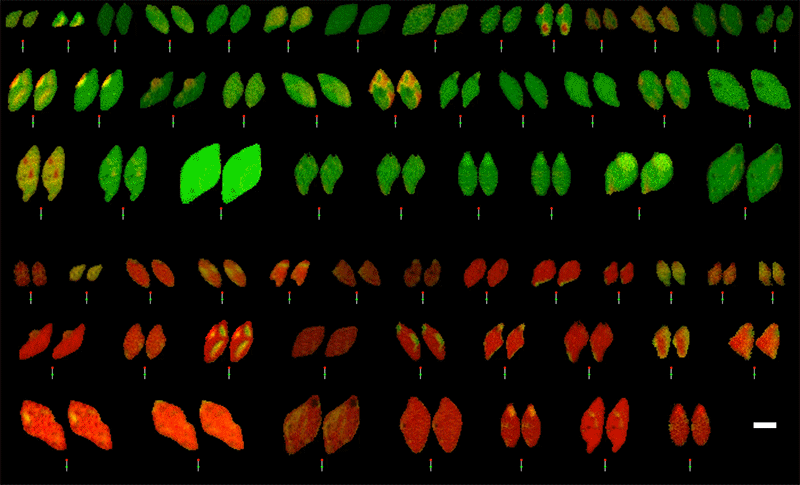Using a type of machine learning called “computer vision” to mine data from x-ray movies, researchers made significant new discoveries about the reactivity of lithium iron phosphate, a material used in rechargeable batteries. The technique revealed phenomena previously impossible to see, including variations in the rate of lithium insertion into different regions of a lithium iron phosphate nanoparticle.
The most significant practical finding—that these variations in reaction rate are correlated with differences in the thickness of the carbon coating on the surface of the particles—could lead to improvements in the efficiency of charging and discharging such batteries.
“What we learned from this study is that it’s the interfaces that really control the dynamics of the battery, especially in today’s modern batteries made from nanoparticles of the active material,” said Martin Bazant, a chemical engineer and mathematician at MIT and a senior author of the study. “That means that our focus should really be on engineering that interface.”
In this and earlier work, Bazant collaborated with William Chueh, a Stanford University assistant professor of materials science, who used scanning transmission x-ray microscopy (STXM) at ALS Beamlines 5.3.2.2 and 11.0.2 to make nanoscale movies of battery particles at work. In 2016, their research teams published groundbreaking nanoscale movies of how lithium ions flow in and out of individual lithium iron phosphate nanoparticles.
Then, the team started using machine-learning tools developed at MIT to accelerate battery testing and optimize charging methods. The researchers used x-ray movies from 2016 to train their computational model to produce equations that accurately describe how the lithium-insertion reactions proceed.
“Until now, we could make these beautiful x-ray movies of battery nanoparticles at work, but it was challenging to measure and understand subtle details of how they function because the movies were so information-rich,” said Chueh. “By applying image learning to these nanoscale movies, we can extract insights that were not previously possible.”
The results from this study suggest that optimizing the thickness of the carbon layer on the electrode surface could help researchers to design batteries that would work more efficiently.

H. Zhao, H.D. Deng, A.E. Cohen, J. Lim, Y. Li, D. Fraggedakis, B. Jiang, B.D. Storey, W.C. Chueh, R.D. Braatz, and M.Z. Bazant, “Learning heterogeneous reaction kinetics from X-ray videos pixel by pixel,” Nature 621, 289 (2023), doi:10.1038/s41586-023-06393-x.
Adapted from the MIT press release, “Pixel-by-pixel analysis yields insights into lithium-ion batteries” and the Stanford press release, “‘Computer vision’ reveals unprecedented physical and chemical details of how a lithium-ion battery works.”